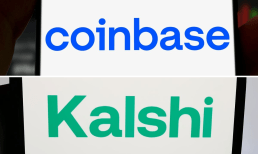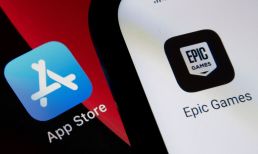And yet, as Pollinate Founder and CEO Al Lukies told Karen Webster when he joined her for this week’s edition of The Week In Payments, our perceptions tend to fool us when it comes to making sense of our changed lives. What happened shouldn’t have been that shocking, since it all started well before the pandemic made itself felt. The big surprise was how fast everything changed.
“Tech companies, FinTechs becoming banks, the second rise of the mobile wallet, a purpose for QR codes appearing — it’s all stuff that was going to happen. It’s just now happening really, really quickly,” Lukies said. So quickly, in fact, that banks, which have been historically slow to innovate, are realizing “just in the nick of time” that if they want to defend their territory, they have to start thinking very differently, he noted.
The Shifting Banking Ecosystem
The competition in the financial services space, Webster said, is moving pretty quickly. JPMC hired HBSC’s head of innovation, LendingClub became a bank by acquiring one, SoFi plans to do the same, and the Square ecosystem is growing rapidly and gaining a technologically innovative advantage.
Lukies agreed with the rapid pick-up in pace, noting that the banks have to move quickly. They’ve sat idle for too long, happy to hand over the acquired relationship to consumers in return for a fee, and have remained largely neutral to things like Square putting its POS devices on the shelves of all merchants and restaurants.
Advertisement: Scroll to Continue
“They thought that looks really interesting, but they didn’t realize what was coming, which is, now Square knows all the data,” he said. “They know everything about what that business is turning over. So [Square] decided they are going to start lending the money, and doing it far more efficiently than the banks. Merchants aren’t going to have to wait five days and give their mother’s maiden name and dog’s first name and send 11 bits of paperwork through snail mail and all that sort of stuff.”
While banks should have been strategically thinking about how to leverage their troves of consumer and business data into more relevant offerings, said Lukies, they tended to take part in what he described as “FinTech tourism.” For example, a bank might buy 1 percent of a FinTech up-and-comer, noncommittally dipping a toe in here and there. But Lukies believes that era is over. Banks now understand that they need to make strategic decisions that come from the board and senior leadership teams. They no longer are the assumed answer to the question of who the customer sees as the safe custodian of their data and their relationship.
As Lukies pointed out, banks have weapons in that battle — and powerful ones. Now they just need to learn how to deploy them.
“Banks certainly have all of the data,” he said. “They have valuable data sets that show what business customers are doing, what they’re selling and what their inventory is. They know where customers are spending their money. So if the bank can become a marketplace between the two, they can generate real value. If they can help consumers monetize that data, get better value and stop paying huge amounts of unseen fees in the affiliate marketing industry, that’s an exciting possibility.”
NFTs And What They Mean For The Future Of Crypto
All of the cool kids these days — artists, musicians and the like — are playing around with non-fungible tokens, or NFTs. Even Jack Dorsey is selling his first-ever tweet, certified via NFT, for a cool $2.5 million. And as NFTs are becoming an increasingly popular fad in digital goods, questions swirl around their real value, and what they mean for the crypto-blockchains from which they derive their status as non-fungible.
As Lukies said, they are very separate issues. The NFT as a sign of value – as something to mark a digital good as authentic or an original copy — makes an awful lot of sense. “This becomes a mark, or a stamp of value to something,” he explained. “It won’t be the first the last example of someone attempting to set the value of something digital and hoping it will rise.”
And while Lukies can foresee this being a boon to the world of digital art collecting, he doesn’t see it necessarily being a boost for bitcoin or other cryptocurrencies, no matter how much crypto boosters seem to claim as much. That’s because bitcoin remains a solution to a problem that most people don’t have in their payment system, he explained. If consumers aren’t also speculating on the price of the currency itself, it adds nothing but an additional layer of complexity without a tangible reward.
“There is nothing more powerful than an idea whose time has come. That said, I’m not sure there’s anyone out in the street today saying, ‘how am I going to feed my kids without my bitcoin?’” Lukies noted.
A Second Look For The Overlooked
Returning to the topics of banks and their future, Lukies said that rethinking their relationship and competition with FinTech is important to their future roadmap, but isn’t all of it. There are attitudes within organizations that need to shift, with payments offering a perfect place to start.
“The massive mistake people make in payments is looking at the cost of payments as the issue, rather than seeing all of the value that’s left on the table for bringing the eyeballs to the content in the first place,” Lukies said, noting how much opportunity is persistently untapped.
But he noted that banks also need to understand how to collaborate with each other. A decade ago, said Lukies, no bank wanted to talk to any other bank, for fear of becoming a takeover risk in the rapidly globalizing atmosphere. That era is over, and banks now need to realize they are no longer each other’s biggest competition and risk — that distinction now goes to the Amazons, Googles, Squares, DoorDashes and Apples of the world.
“If there are 10 banks who between them have 400 million consumers and 20 million small business customers, and they’re offering you access to that network, that’s a pretty compelling offer in the market,” Lukies said.
And it’s an offer that banks need to be able to make — which means their best bet is to work together to protect the ground they can still keep.
Read More On Payments:



